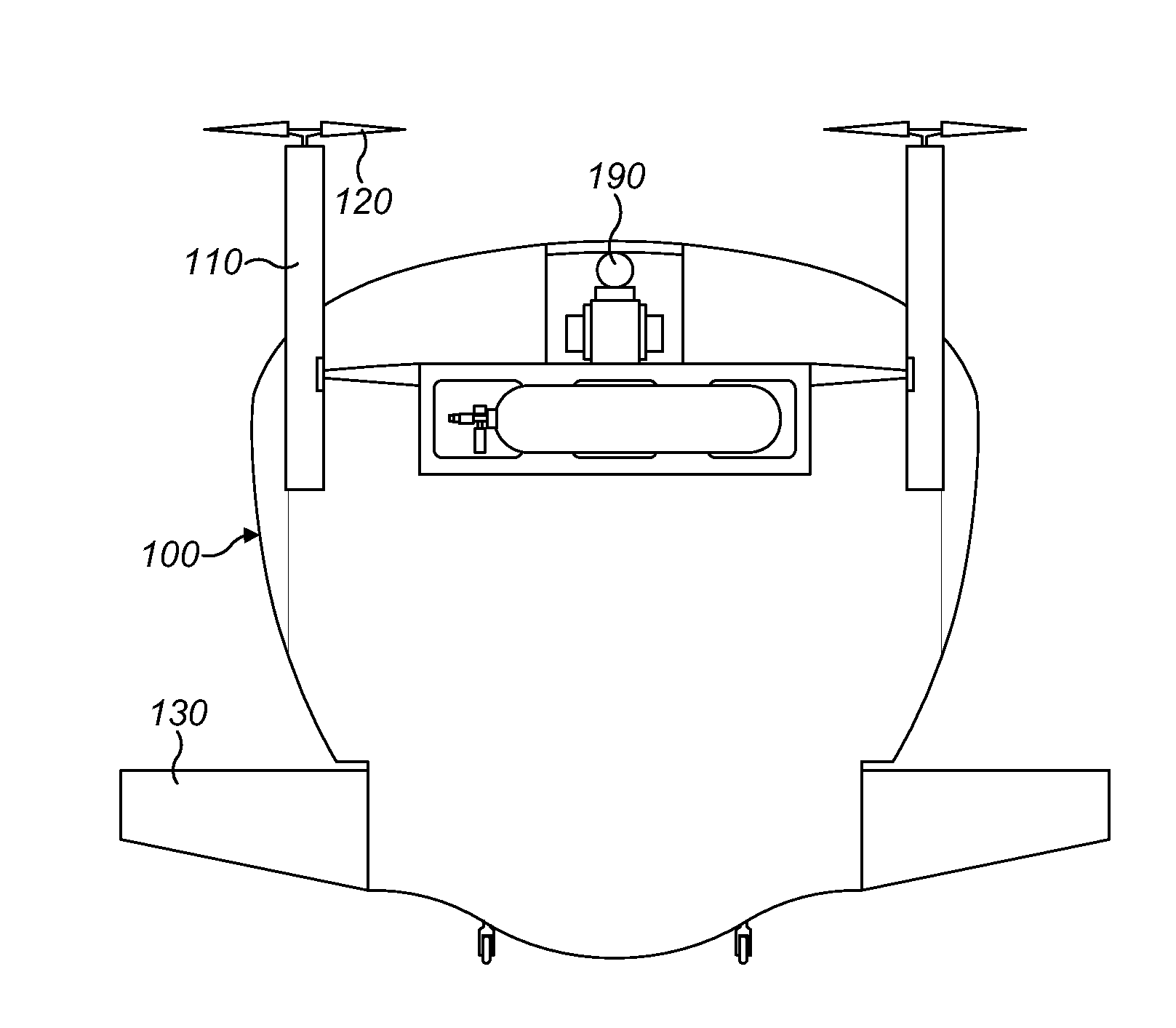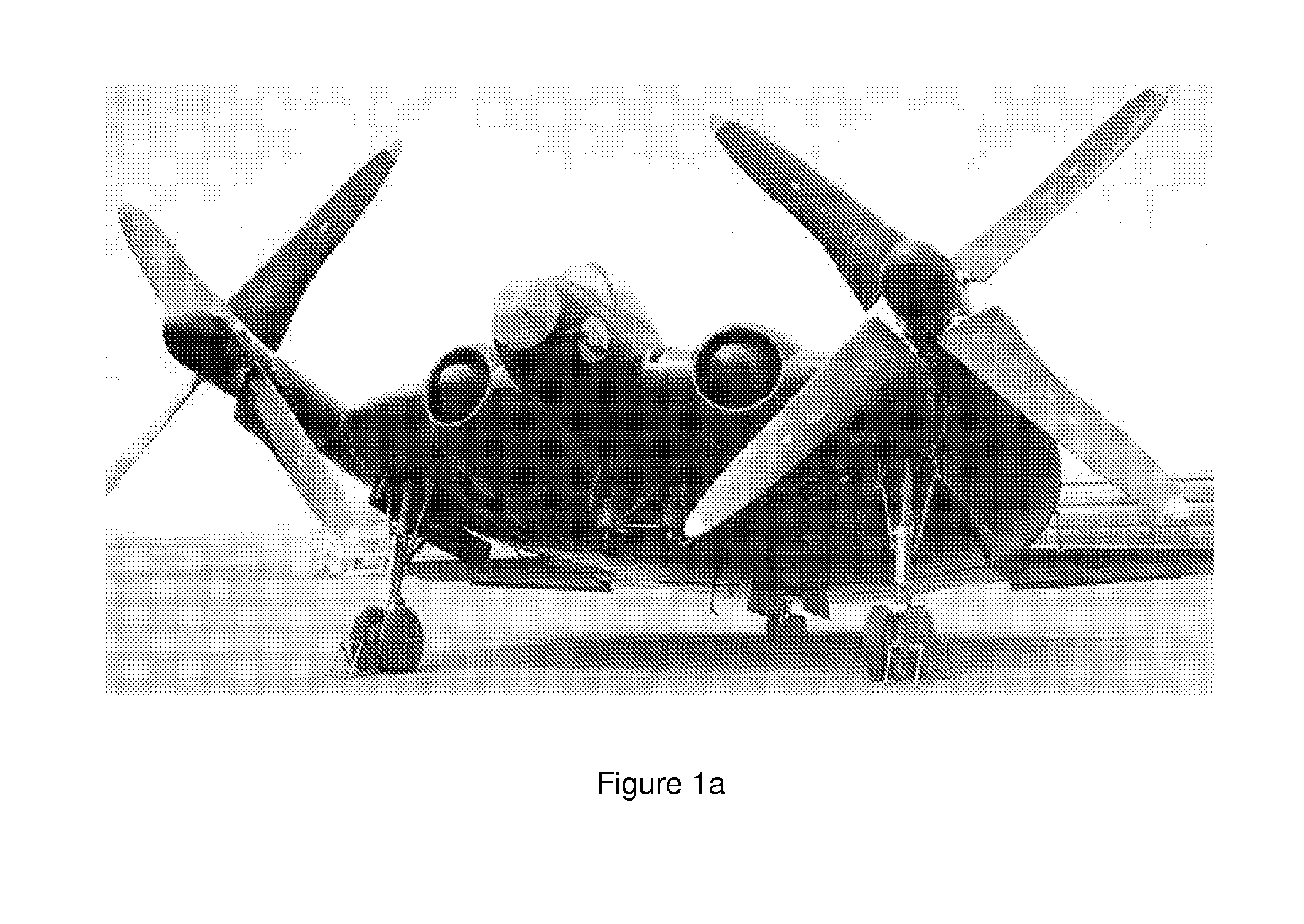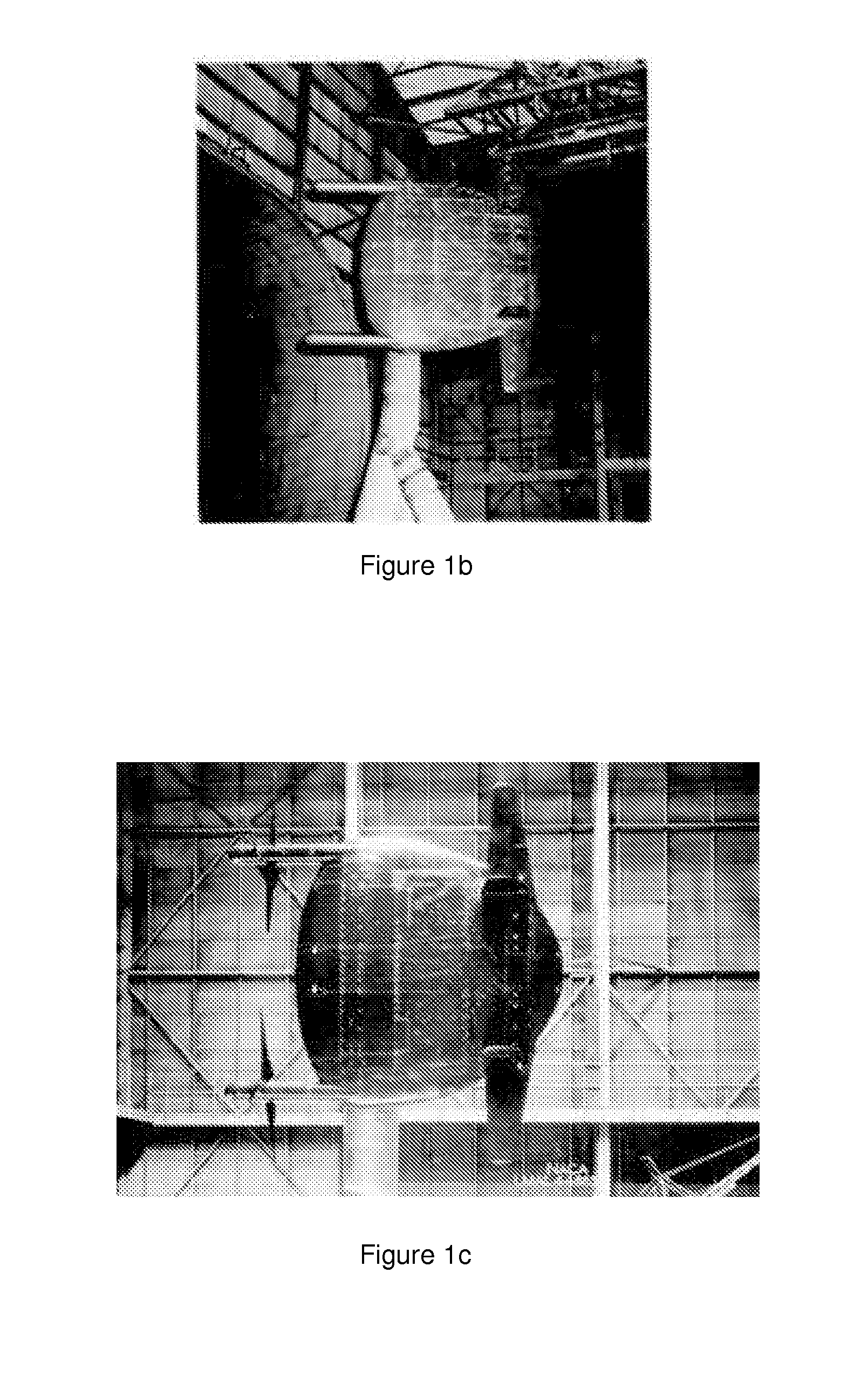Unmanned Aerial Vehicle
a technology of unmanned aerial vehicles and rotors, applied in the direction of navigation instruments, process and machine control, pictoral communication, etc., can solve the problems of little control of sideways movement and uav rotors, and achieve the effect of reducing noise and vibrations
- Summary
- Abstract
- Description
- Claims
- Application Information
AI Technical Summary
Benefits of technology
Problems solved by technology
Method used
Image
Examples
Embodiment Construction
[0038]FIGS. 2a-2c show a low aspect-ratio unmanned air vehicle with vertical take-off and landing capability, hover capability, high cruising speeds and long range. The air vehicle comprises a body 100 having surfaces that provide lift, that is the air vehicle has a blended fuselage-wing configuration, but unlike other blended fuselage wing configurations most if not all of the whole of the body can be considered to be both wing (lifting surface) and fuselage (payload accommodation). FIG. 2a is view of the air vehicle from above. The vehicle planform is a disc-like shape. Possible planforms include rectangular, square, ellipse, circular, Zimmerman, inverse Zimmerman. The FIG. 2 embodiment shows a Zimmerman, or more precisely an inverse Zimmerman planform. The Zimmerman planforms have a shape formed by the intersection of two ellipses, for example, in which a first ellipse is cut by a second elliptic curve. The remaining part of the first ellipse forms the major part (greater than ha...
PUM
 Login to View More
Login to View More Abstract
Description
Claims
Application Information
 Login to View More
Login to View More - R&D
- Intellectual Property
- Life Sciences
- Materials
- Tech Scout
- Unparalleled Data Quality
- Higher Quality Content
- 60% Fewer Hallucinations
Browse by: Latest US Patents, China's latest patents, Technical Efficacy Thesaurus, Application Domain, Technology Topic, Popular Technical Reports.
© 2025 PatSnap. All rights reserved.Legal|Privacy policy|Modern Slavery Act Transparency Statement|Sitemap|About US| Contact US: help@patsnap.com



